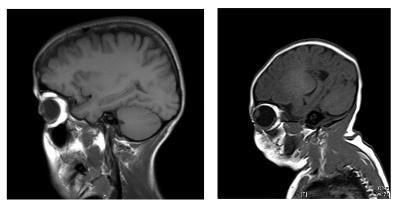Using AI to control energy for indoor agriculture
30 September 2024
Published online 14 February 2017
Instability in DNA replication results in a developmental brain disorder.

© Fowzan Sami Alkuraya
The research team sequenced all of the expressed genes in 29 MPD patients from several families1. The patients shared mutations in DONSON that reduce the gene’s efficacy without knocking it out completely. Without sufficient DONSON levels, forks in DNA that normally form during replication aren’t properly detected and managed, leading to DNA damage.
The team confirmed DONSON’s role with a variety of tests, including a technique known as DNA fiber analysis with which they could directly observe what happens to the DNA. “We could actually visualize how DNA from patients behaved differently from control DNA. We observed replication stress, which predisposed the cells to widespread DNA damage,” says Fowzan Alkuraya, a human geneticist at King Faisal Specialist Hospital and Research Center focused on disease genes, who was one of the scientists leading the study.
The mutations also seems to interfere with machinery that would normally detect damaged DNA during checkpoints in the cell cycle, allowing the damage to grow into chromosome breakage and genome instability.
To confirm their findings, the researchers used normal DONSON to repair the defects in cells cultured from patients.
While this discovery won’t help treat MPD patients, it significantly improves our understanding of DNA replication and its role in development, though its implications go further.
“Regardless of what we learn from these discoveries, the fact that we can finally explain to families the cause of their children's problem and how to avoid it in the future is what keeps us going,” says Alkuraya.
“Some of these families had run out of hope that anyone could explain their children's mystery. I can't think of words to describe how grateful they were to hear that they can finally conceive a healthy child through preimplantation or prenatal genetic diagnoses.”
doi:10.1038/nmiddleeast.2017.33
Stay connected: